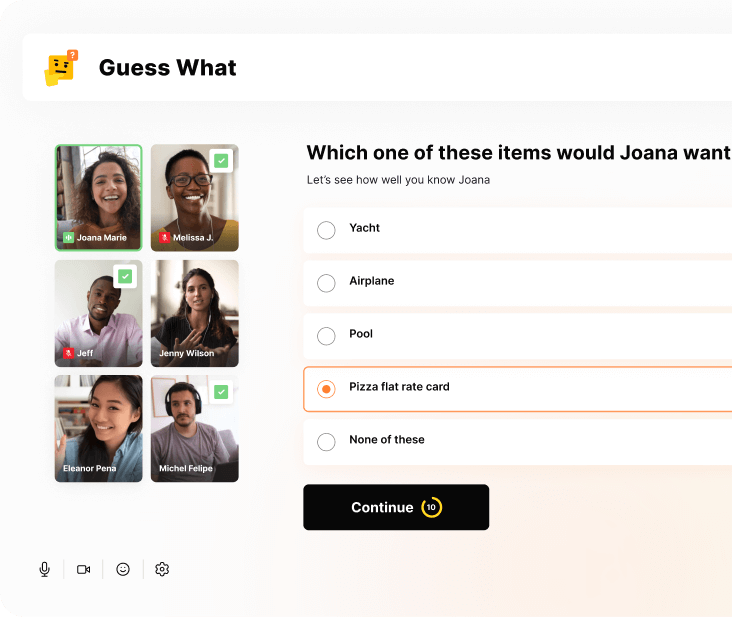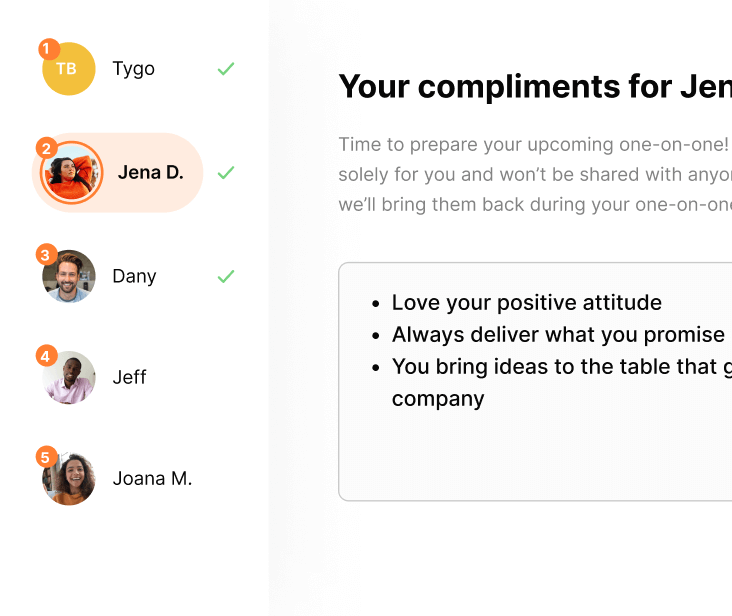Back to Blog
4 top tips to level up employee engagement with gamification
Do you play games at work? No, not today's Wordle or those sneaky rounds of Candy Crush (We won't tell anyone!). We mean using games to make work more fun, engaging, and productive.
It's called gamification, and it's used by some of the world's biggest companies to improve employee engagement.
Employers are incorporating game elements like levels, points, and badges, tapping into our natural desire for competition, social interaction, and recognition.
Adding these elements to tasks makes us more likely to stay focused, engaged, and productive.
4 ways to increase engagement with gamification
Employee engagement statistics demonstrate how important it is to engage your employees. Here are a few ways to engage team members with gamification.
1. Onboarding new employees
It is essential to gamify the onboarding process to engage and retain top talent. The days of onboarding paperwork and training videos are over now that digital natives like Gen Z are entering the workforce. Instead, gamification offers more engaging and interactive training experiences. By gamifying experiences, employees are more likely to retain and apply information.
2. Training and development
Making professional learning and development enjoyable can be challenging. Training often feels repetitive, but incorporating game elements makes it more engaging and fun. Team members can quantify their learning and spot areas for improvement using points-based quizzes and trivia.
Share fun facts and bond with a team quiz
Have your participants choose from a list of questions they’d like their coworkers to answer about them, before watching as they guess the right answer.
01. Yes
share-fun-facts-and-bond-with-a-team-quiz

Run a guided recognition activity
Have your participants choose from a list of questions they’d like their coworkers to answer about them, before watching as they guess the right answer.
01. Yes
run-a-guided-recognition-activity

Organize a virtual cooking class
Hire a professional chef to help your team cook a delicious lunch or dinner. May be difficult for co-workers with families. To find providers and get tips, read our blog about virtual cooking classes.
02. No
organize-a-virtual-cooking-class

Hire a stand-up comedian
Have your participants choose from a list of questions they’d like their coworkers to answer about them, before watching as they guess the right answer.
02. No
hire-a-stand-up-comedian

No items found
No items found
Table of contents
Do you play games at work? No, not today's Wordle or those sneaky rounds of Candy Crush (We won't tell anyone!). We mean using games to make work more fun, engaging, and productive.
It's called gamification, and it's used by some of the world's biggest companies to improve employee engagement.
Employers are incorporating game elements like levels, points, and badges, tapping into our natural desire for competition, social interaction, and recognition.
Adding these elements to tasks makes us more likely to stay focused, engaged, and productive.
4 ways to increase engagement with gamification
Employee engagement statistics demonstrate how important it is to engage your employees. Here are a few ways to engage team members with gamification.
1. Onboarding new employees
It is essential to gamify the onboarding process to engage and retain top talent. The days of onboarding paperwork and training videos are over now that digital natives like Gen Z are entering the workforce. Instead, gamification offers more engaging and interactive training experiences. By gamifying experiences, employees are more likely to retain and apply information.
2. Training and development
Making professional learning and development enjoyable can be challenging. Training often feels repetitive, but incorporating game elements makes it more engaging and fun. Team members can quantify their learning and spot areas for improvement using points-based quizzes and trivia.
3. Team building
Remote team building can be facilitated through gamification. Games encourage teamwork and collaboration among employees. Working together to solve challenges builds relationships and trust. Despite working in different locations around the world, team building activities and games facilitate communication and learning.
4. Recognizing and rewarding employees
Engaging employees depends on recognition. What better way to reward employees than with friendly competition? You can use gamification to award points, badges, and prizes for completing tasks, meeting goals, and going above and beyond. The frequency of rewards increases employee engagement, and unexpected rewards encourage employees to repeat good business practices.
Does gamification & rewards work?
Gamification to improve employee engagement works. In a recent survey, employee gamification boosted competition, eagerness, and productivity among 89% of respondents. The same percentage also agreed they would be even more productive if their work contained more gamified tasks.
In addition, 87% said that gamification in the workplace made them feel more connected and purposeful. After completing gamified training, 88% of participants felt happier, and 83% were motivated.
By breaking down complex tasks into simpler ones, gamification ensures that the brain doesn't get tired or stressed as quickly. Through using positive feedback consistently over time, games increase motivation by activating reward pathways in the limbic system and the amygdala, creating changes in the brain.
When it comes to employee engagement, getting consent is crucial. Employees need to be willing to play, not forced through compulsory fun.
Employee gamification platforms to try
Gamification tools can help you improve engagement and boost motivation. Setting challenges, awarding points, and giving feedback are easy with employee engagement platforms and engagement apps.
Here are a few tools to consider adding to your employee engagement solution:
1. Gamify employee activities with Arcade
Arcade is a complete performance engagement platform fully customizable to your business. Gamifying your workplace with Arcade introduces elements of fun and competition into your day-to-day activities. With this app-based employee motivation system, your workforce will be motivated and rewarded for completing daily tasks.
2. Use Spinify to increase sales
Spinify leverages gamification and psychological motivation principles to improve team performance. The easy-to-use, visually appealing interface offers an easy way to boost motivation and increase sales. Create a sense of competition by creating scoreboards and awards, or track individual progress with levels and badges.
3. Build strong teams with Gomada
Our remote team building app can help you gamify the workplace and improve employee engagement. With Gomada, you can unite employees in fun, interactive activities that promote team building and collaboration. Whether you're looking for ways to gamify the workplace or want to make sure remote employees feel connected, Gomada can help.
FAQs:
What are some benefits of gamification in the workplace?
Gamification isn't just about adding games into work environments; it's about making workplaces more engaging and productive. Some benefits of gamifying the workplace include the following:
- improves performance
- fosters collaboration among team members
- enhances creativity and innovation
- simplifies internal processes
- strengthens relationships between managers and employees
- boosts morale
- increases employee satisfaction
What are gamification incentives?
Gamification incentives are rewards employees can earn for completing tasks or hitting goals. Incentives can be anything from digital badges to points, virtual currency, leaderboard rankings, or real-world prizes.
Subscribe to get our latest updates
Subscribe to get our latest updates
.webp)



.jpg)

.jpg)